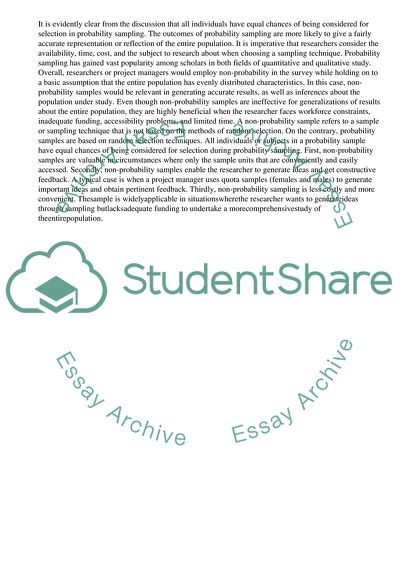Cite this document
(“Non-probability Samples in Management Research Essay - 1”, n.d.)
Non-probability Samples in Management Research Essay - 1. Retrieved from https://studentshare.org/management/1666110-critically-evaluate-the-use-of-non-probability-samples-in-management-research-in-what-circumstances-should-non-probability-sample-be-used
Non-probability Samples in Management Research Essay - 1. Retrieved from https://studentshare.org/management/1666110-critically-evaluate-the-use-of-non-probability-samples-in-management-research-in-what-circumstances-should-non-probability-sample-be-used
(Non-Probability Samples in Management Research Essay - 1)
Non-Probability Samples in Management Research Essay - 1. https://studentshare.org/management/1666110-critically-evaluate-the-use-of-non-probability-samples-in-management-research-in-what-circumstances-should-non-probability-sample-be-used.
Non-Probability Samples in Management Research Essay - 1. https://studentshare.org/management/1666110-critically-evaluate-the-use-of-non-probability-samples-in-management-research-in-what-circumstances-should-non-probability-sample-be-used.
“Non-Probability Samples in Management Research Essay - 1”, n.d. https://studentshare.org/management/1666110-critically-evaluate-the-use-of-non-probability-samples-in-management-research-in-what-circumstances-should-non-probability-sample-be-used.


